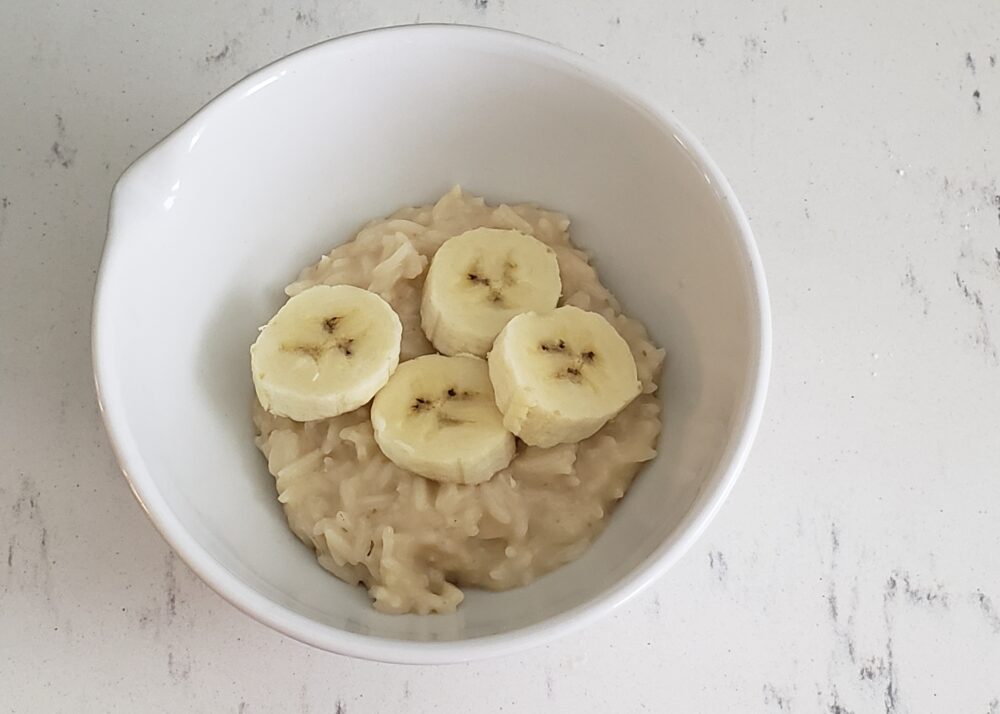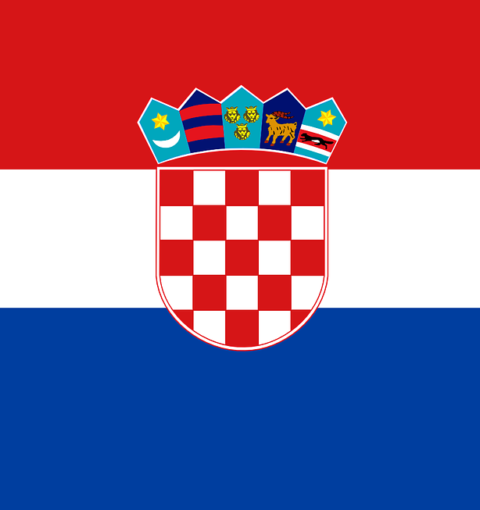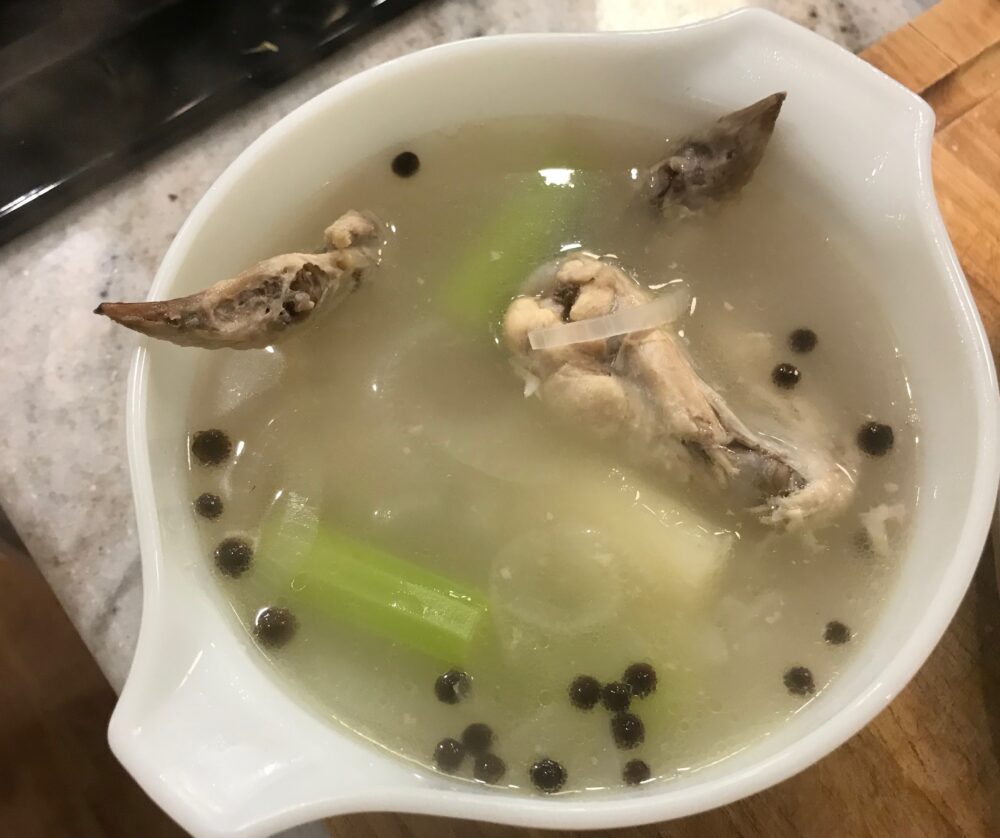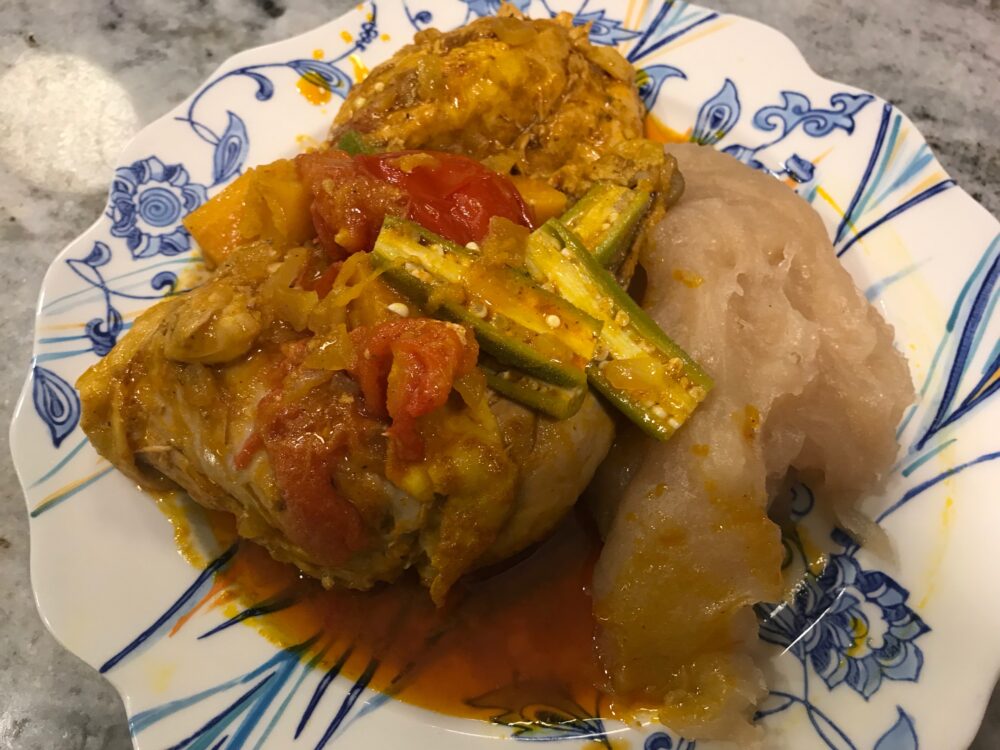Perhaps by the end of this adventure, we’ll have learned how to say “coast” in every language?
Doubtful, but last time we visited a Spanish-speaking coast (Costa Rica) and this stop will be a French-speaking coast in Western Africa.
While we could have included this country with the letter “I”s since most Americans know it as Ivory Coast, I thought it was more appropriate to use the native tongue. And see how well we could make some French pronunciations. Spoiler alert: les terribles!
THE CUISINE

Named for one of its largest exports by the Portuguese and French traders who arrived here (elephant tusks), Côte d’Ivoire is a nation on the southern coast of West Africa.
The topography changes from mountains to rainforests to grassland to urban cities with high skyscrapers.

The cuisine is varied from pork and chicken to seafood and fresh vegetables. Tubers, grains, and nuts are also super important to the diet here. Stews and soups made from ground nuts and vegetables are very common. And they sure do like their spice.
Also, of note, not so different from Costa Rica, they are a huge producer of coffee and cocoa. In fact, Côte d’Ivoire are one of the leading producers of chocolate in the world. Although the majority of that is exported, so we owe a huge thank you to this country.
Traditional Dishes:
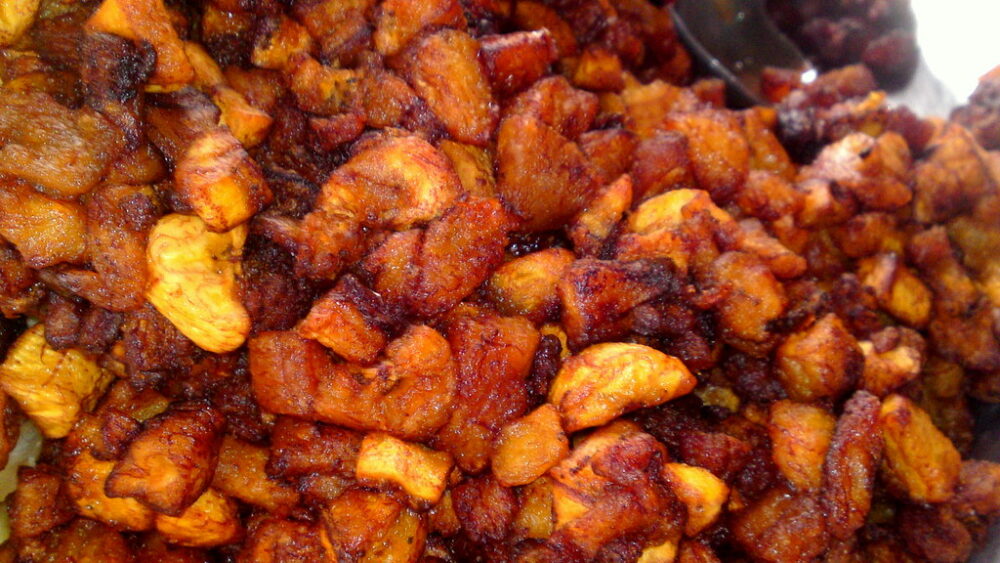
ALLOCO – an addicting snack that is often served with a spicy sauce, these nuggets are deep fried chunks of sweet plantains
SAUCE ARACHIDE– there are many sauces in Côte d’Ivoire that factor in as the base for a meat or fish stew; this one is comprised of peanut butter, or groundnuts and chili peppers
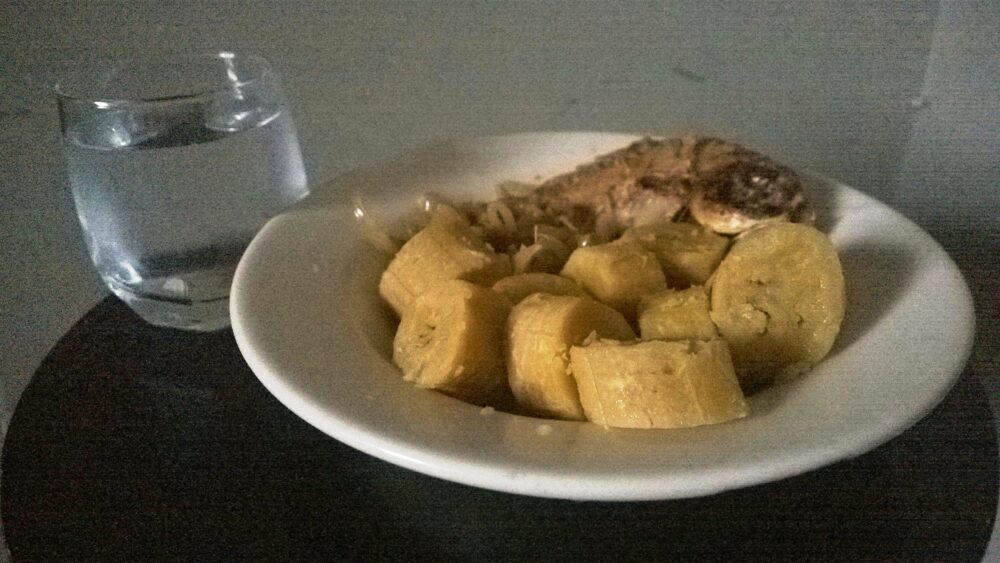
AKPESSI – this is an eggplant stew that is cooked with plantains and flavored with smoked herring or other fish
POISSON BRAISÉ – this is a pretty simple dish that shows off the local seafood of Côte d’Ivoire; a marinated fish (usually perch or tilapia) is grilled; you’ll find this open-air restaurants called maquis
IVORIAN FOOD IN NEW YORK
Like much of the West African cuisine in this city, most of the Ivorian restaurants are huddled around East 116th Street in Harlem or the South Bronx.
Some feature dishes from many countries spanning the western coast of the African continent, but places like New Ivoire and Le Grin focus on dishes from the Ivory Coast like attiéké and fried fish.
THE VIDEO
This is one of our shorter (and sweeter?) videos. Sam likes the idea of elephants roaming free in Cote d’Ivoire.
He also kind of helps me with the shaking of the pot during the cooking of the chicken. And he loves mixing water into couscous, so there were some interactive fun along the way.
THE DISHES
Kedjenou is considered the national dish of Côte d’Ivoire and it is an interesting stew since it does not require any liquid other than what is already contained in the basic ingredients.
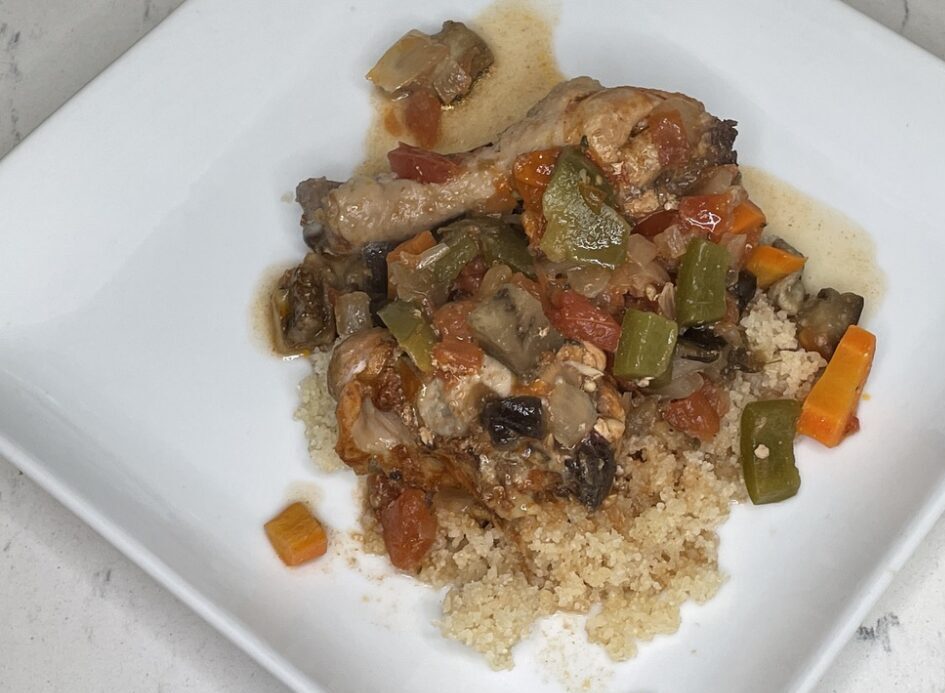
The chicken is put into a large dry pot, traditionally called a “canary” and made of earth or clay. We used a Dutch oven which is a fair substitute. It’s mixed with hearty vegetables like peppers, tomatoes, eggplant, onions, and a hot pepper to be cooked in its own juices. What emerges is a tender and rustic chicken stew with tons of flavor.
The name kedjenou comes from a word in the Baoulé language, which means to shake or move. And that name plays into the process for cooking to this day.
Throughout the cooking process, the pot is supposed to be shaken in order to prevent the chicken and other ingredients from sticking to the bottom.
The most traditional dish to serve kedjenou with is attiéké, so guess what else we made…

Attiéké is basically a couscous made from fermented and ground cassava. It has a distinct slightly yogurts-smell but really tastes very similar to couscous.
It make for an incredible base to a saucy stew or soup.
The name of this dish comes from the Ebrié language and the word “adjèkè” but later became known as “attiéké” (pronounced acheke) by the French colonists.
THE RECIPES
inspired by
Recipe Card

Kedjenou from Côte d Ivoire
Description
Chicken stewed in its own juices with vegetables and spicy peppers makes for a popular Ivorian dish that is a bit interactive to cook and worth the wait.
Ingredients
Marinade
Stew
Instructions
Marinate
-
Sprinkle crushed bouillon cube, paprika, ginger and garlic paste onto chicken. Rub into all parts of the meat.
-
Allow to marinate in the refrigerator for at least two hours.
Stew
-
In a Dutch oven or clay pot, add chicken pieces along with onion, tomatoes, eggplant, peppers, carrots, bay leaf, thyme, salt, and pepper.
-
Mix everything well in the pot.
-
Cover the pot and turn the heat to low.
-
Shake the pot every 10-15 minutes leaving the lid on.
-
Cook for about 45-60 minutes until chicken is cooked through.
-
Serve with white rice or attieke.
Nutrition Facts
- Amount Per Serving
- Calories 260kcal
- % Daily Value *
- Total Fat 11g17%
- Saturated Fat 2.87g15%
- Cholesterol 81mg27%
- Sodium 321.87mg14%
- Potassium 794.89mg23%
- Total Carbohydrate 16.3g6%
- Dietary Fiber 7g29%
- Sugars 7.89g
- Protein 24.6g50%
- Calcium 54 mg
- Iron 1.84 mg
- Vitamin D 0.09 IU
* Percent Daily Values are based on a 2,000 calorie diet. Your daily value may be higher or lower depending on your calorie needs.
Recipe Card

Attieke from Cote d Ivoire
Description
This very simple Ivorian couscous pairs beautifully with a saucy stew; use in place of white rice for a unique texture and flavor.
Ingredients
Instructions
-
Combine equal parts attiéké and water. Mix well and let sit for a few minutes until the water is absorbed.
-
Cover attiéké and warm in a microwave for about 2-3 minutes.
-
Remove and season to taste with salt. Drizzle olive oil over the top.
-
Eat with a saucy stew, like kedjenou
SPECIAL INGREDIENTS
Attiéké

We very well may have been cheating. Instead of fermenting and grinding the actual cassava very finely, we bought a box of attiéke.
We’re so lucky to live close to an incredible African market and it was very easy (and cheap) to find this box of Ivorian couscous.
The recipe on the box (and many I found online) called for microwaving it. This was the first time we used the microwave for this project, but why not? We have tried our hand at fermentation on this journey to less than stellar results.
Attiéké comes in dried or frozen form when purchased. It’s possibly the most famous dish in Côte d’Ivoire serving as a starch to top with stews and sauces.
Nayama seems to be the most available brand in the US and it worked for us. Looks like if you are not lucky enough to have an African market nearby, you can always order it online.
HOW WE SCREWED IT UP

So since the meat did not end up sticking to the bottom of the Dutch oven (thanks to our shakes), I’m going to call this one a success. And the chicken released a good deal of flavorful liquid and it tasted great.
That being said, of course, there were still some minor issues. The breast was a bit a dry, so perhaps I should have cooked that a little bit less long than the rest. I could have added it later to the pot.
I also think my vegetable to chicken ration was a bit off. I like vegetable stews quite a bit (and this one was good), but some may complain there wasn’t enough meat.
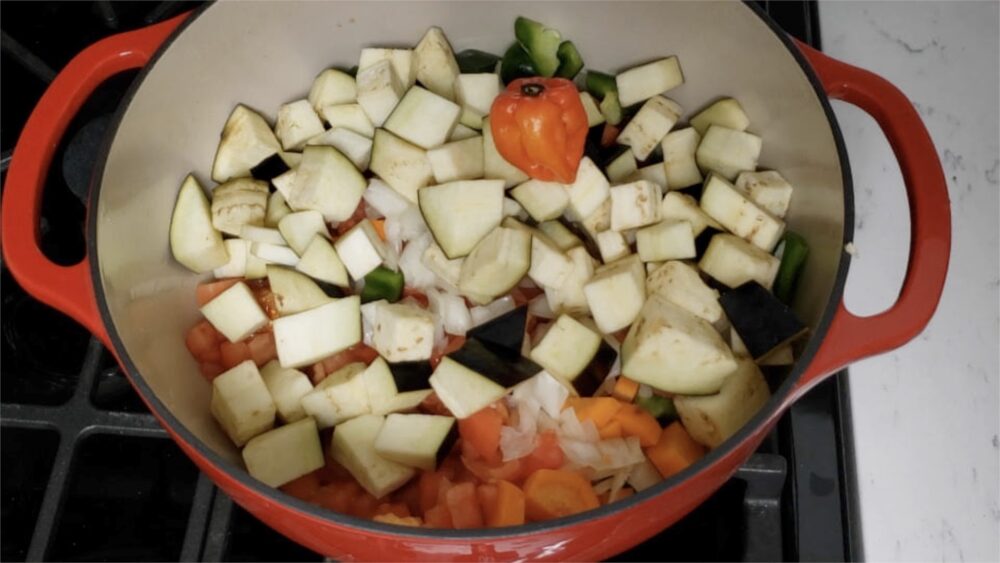
The habanero pepper I used also provided a good deal of heat. I was surprised given I only used one pepper.
As for the attiéké, I probably shouldn’t have microwaved it. Although I have been using a microwave my entire life, the attiéké turned out a bit uneven with crunchy dry bits. The rest was subtly sour and interesting. This is the first time on this journey I took the easy way out, but making this from scratch seemed very daunting. A stovetop might have helped at the very least.
SAM’S REACTION
At the beginning of the video, Sam made it clear that he does not like spicy food. As much as I would have liked to, I did not force my child to eat a spicy stew.

Instead, I made a separate batch of the chicken for him minus the pepper. He liked it and ate it up.
The attiéké, however, didn’t fare so well in Sam’s grade book. He has been a big fan of couscous so it was promising. But he made the mistake of taken a sniff of the bowl before putting it in his mouth.

And that was the end of that. It does have a tangy, sour aroma so quite different from subtle couscous. Needless to say, it was a pass.
NEXT TIME
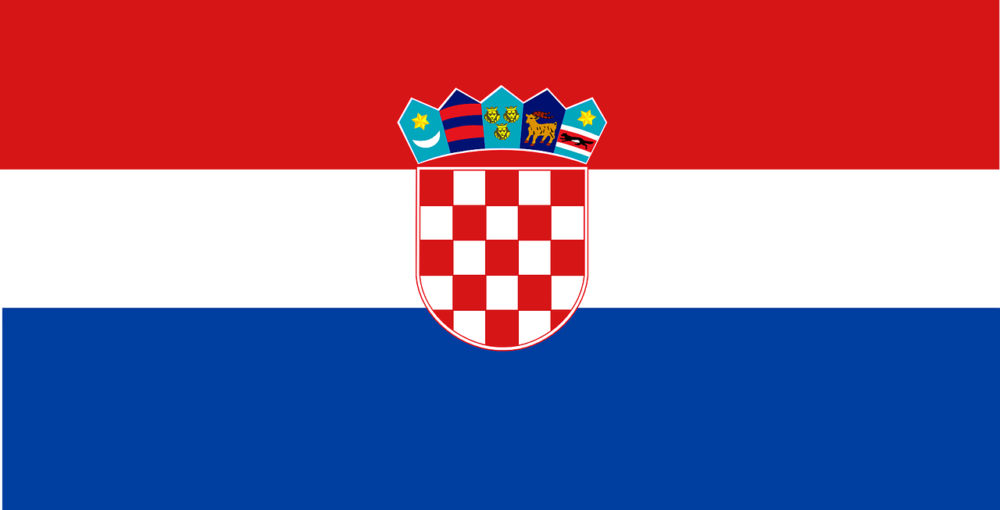
It’s kind of amazing how many of these countries Sam has actually been to. I’m not sure how well he really remembers his time in the land of Game of Thrones, but we spent almost two weeks exploring southern Croatia and it was unforgettable. Let’s see how much he remembers…


